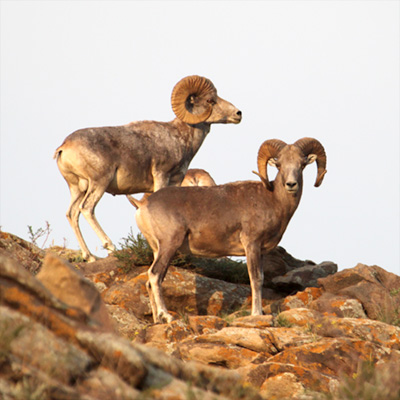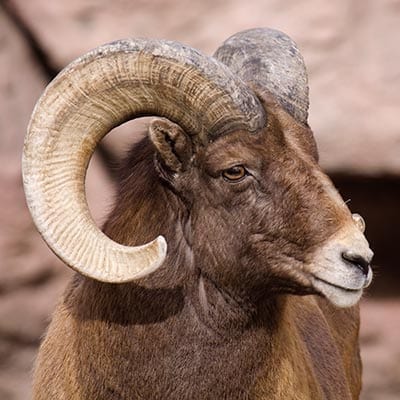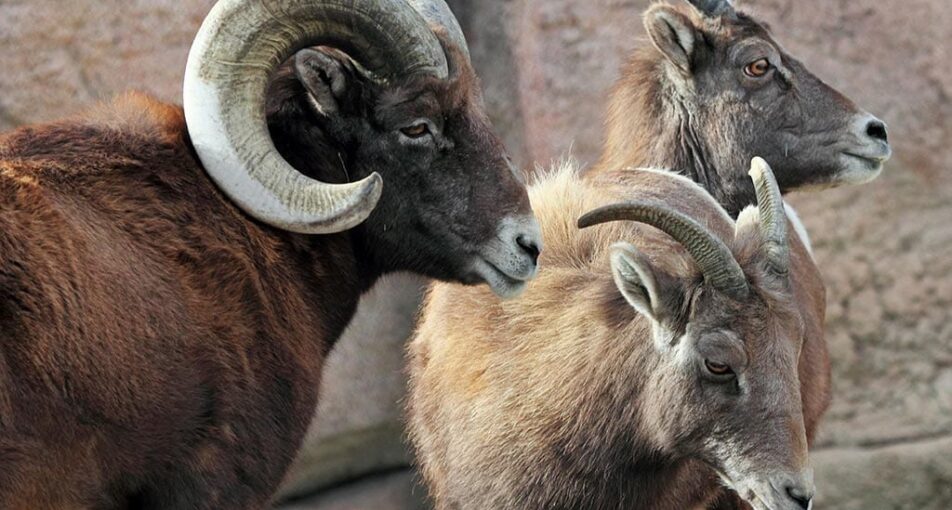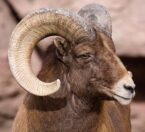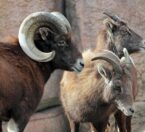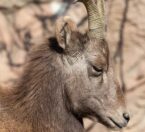The hooves of the bighorn sheep have a hard outside rim used for digging into the ground or cutting into snow or ice. The inside of the hoof is soft and spongy like the bottom of a tennis shoe to aid in traction. They have split hooves that pinch and hold rocks somewhat like clothespins and the claws higher up on the foot act like brakes if the sheep starts to slide on loose rock or slippery surfaces.
Classification
| CLASS: | Mammalia |
| ORDER: | Artiodactyla |
| FAMILY: | Bovidae |
| GENUS: | Ovis |
| SPECIES: | canadensis |
Habitat & Range
Alpine meadows and foothills near rocky cliffs at elevations ranging from 7,000 to 10,000 feet.
Found in the Rocky Mountains from southern Canada to Colorado
Location


Adaptations
- Crash, Bam!
- Adult Rocky Mountain bighorn sheep rams have massive horns that can weigh as much as 50 pounds (22 kg). During the fall rut, or mating season, rams clash horns to establish dominance and breeding rights. Rearing up on their hind legs, opposing rams charge full speed toward each other and butt heads using their horns as battering rams. Although they may hit with considerable force, the animals are seldom hurt because the skull and massive neck muscles absorb the force of the blow. The sound of clashing horns can be heard a mile away.
- Rock Climbers
- Bighorn sheep are agile climbers that can climb up steep rocky slopes with ease. They can jump seven feet (2 m) across wide crevices in their rugged habitat and can even turn in mid-air landing on small ledges of rock. Even young lambs can scamper across rocky terrain. Their climbing ability helps bighorn sheep escape predators including mountain lions and coyotes.
- Designer Footwear
- The hooves of the bighorn sheep have a hard outside rim used for digging into the ground or cutting into snow or ice. The inside of the hoof is soft and spongy (like the bottom of a tennis shoe) to aid in traction, making these sheep excellent climbers and jumpers. They have split hooves that pinch and hold rocks (somewhat like clothespins) and the claws higher up on the foot act like brakes if the sheep starts to slide on loose rock or slippery surfaces.
Physical Description
- Males are about six feet (1.8 m) long; females are four and a half to five and a half feet (1.3-1.7 m) long.
- Males weigh 125-300 pounds (56-135 kg); females weigh 75-200 pounds (34-90 kg).
- Males stand three to three and a half feet tall (1.1 m) at the shoulder.
- Rocky Mountain bighorn sheep have brown to gray brown fur with a distinctive white rump patch and white on the belly, muzzle, back of legs and a white eye patch.
- Males have massive horns that spiral backwards from the top of the head forming a curl that can measure over three feet (1 m); females have much smaller horns.
Diet
What Does It Eat?
In the wild:
In summer they eat grasses including horsetail, bluegrass, June grass, needle grass and wheat grass. In winter they eat woody items such as willow, alder and some evergreens.
At the zoo:
Hay, grain and vitamin supplements.
What Eats It?
Wolves, mountain lions, coyotes and eagles prey on this species.
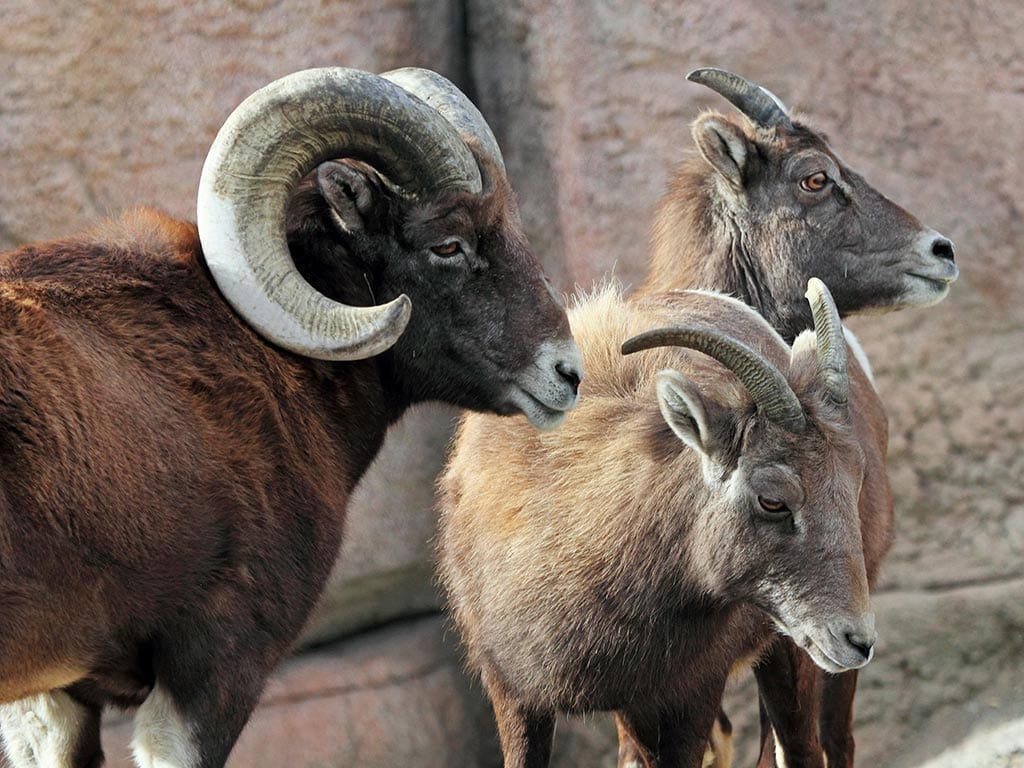
Social Organization
Rocky Mountain bighorn sheep are social animals that live in herds. In spring and summer, males form bands of up to 10 individuals led by a dominant ram. Females and young form separate herds and generally graze away from the males. In winter, larger mixed herds form consisting of up to 100 males, females and young.
Life Cycle
Females, called “ewes,” mature at about two and a half years of age. During the fall rutting season, males have head butting contests to determine dominance and breeding rights. Because of the need to establish dominance, males rarely breed before the age of six. After a gestation of about 180 days, females give birth to a single lamb; twins are rare. Lambs are born with horn buds, can stand almost immediately and can run and climb within a day or two. Lambs are weaned at four to six months and weigh about 75 pounds (34 kg) as winter begins. Bighorn sheep live an average of eight years, but can live up to 16-18 years.
